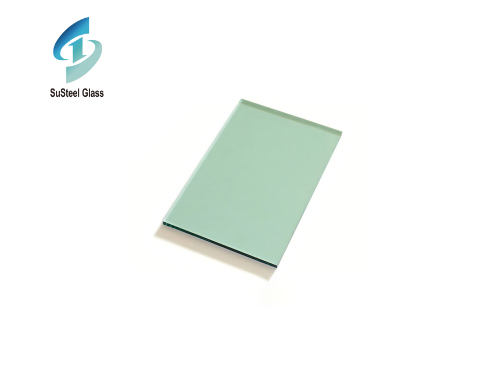
The advantages of glass windows & doors surface treatment:
1. Improve the physical and chemical properties of glass, such as surface coating to improve the strength and chemical stability of glass.
2. Obtain the characteristics that the glass substrate cannot have. For example, after the glass substrate is plated with TbFeCo magneto-optical film, the magnetic disc can be used as information recording; for example, after the glass substrate is affixed with grating film, the rainbow effect can be generated by light irradiation.
3. The same glass substrate in glass windows & doors can have different properties and functions by using different surface treatment methods. Such as float glass as the substrate, the use of chemical sand can form translucent hair surface. Using the plated heat reflection film, can reflect 67% of the solar energy, shading function. The color changing film can change the color of glass under different intensity of light or different direction of electric field.
4. Less raw material consumption, low pollution, cheap price. For example, ion implantation uses few target materials, and the implantation process is basically pollution-free to the environment, which meets the requirements of sustainable development.
5. Simple equipment and high added value. Such as ice glass, with flat glass as the original piece, can be processed with simple equipment, and the price is much higher than the flat glass original piece.
Disadvantages of surface treatment of glass windows & doors:
1. The surface treatment effect has certain limitations, such as surface diffusion coloring is easy to get yellow, brown, red, but it is difficult to get blue, green and other colors, the color is not as bright as the overall coloring; Also such as hot tempered glass, can not be cut and other mechanical processing, sometimes automatic cracking;
2. The depth of the surface treatment layer is limited to a certain extent. The ion exchange layer ranges from tens of microns to hundreds of microns, and the ion implantation depth is about hundreds of nanometers.
3. Some surface films and coatings of glass windows & doors are not wear-resistant, easy to be eroded, and often peel off.
 High Purity Tin Ingot: Essential Uses and Key Advantages
High Purity Tin Ingot: Essential Uses and Key Advantages
 Burglar-Resistant Glass: Enhancing Security and Peace of Mind
Burglar-Resistant Glass: Enhancing Security and Peace of Mind
 Exploring the World of Green Tinted Glass Products: Versatility and Sustainability
Exploring the World of Green Tinted Glass Products: Versatility and Sustainability


